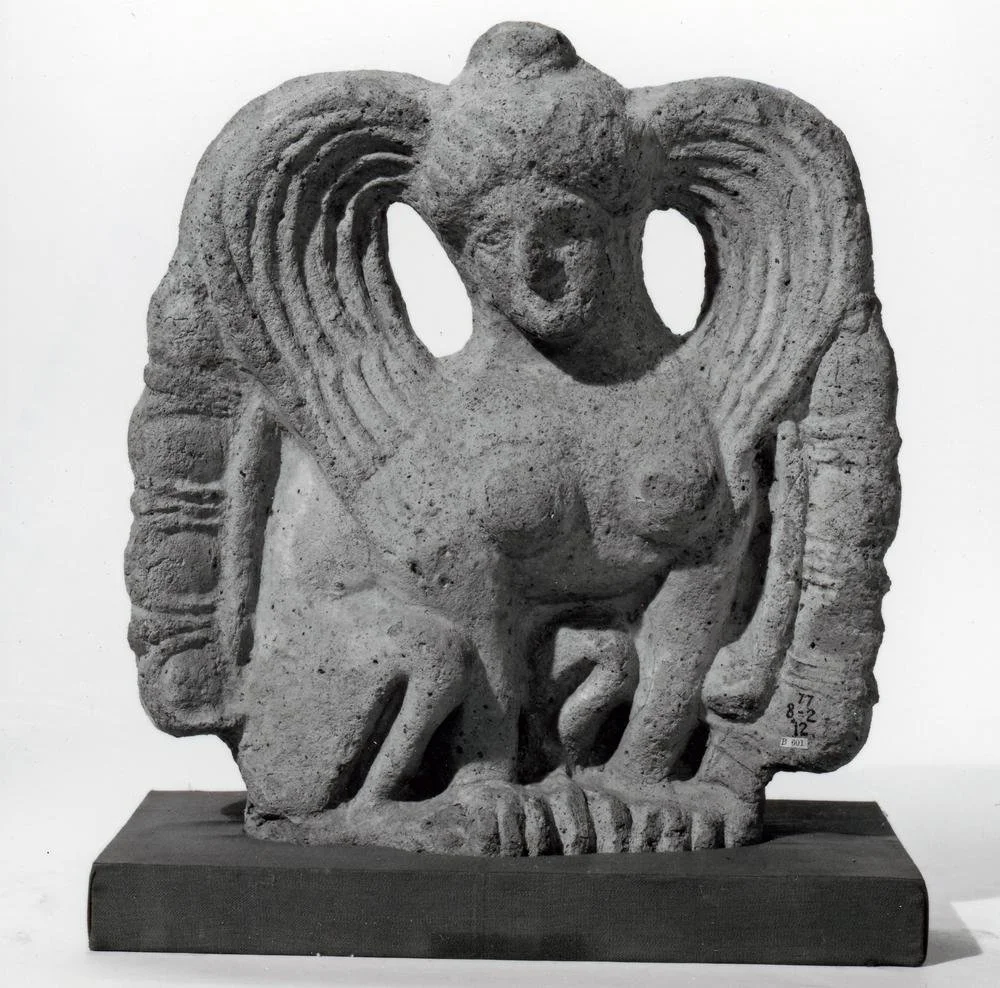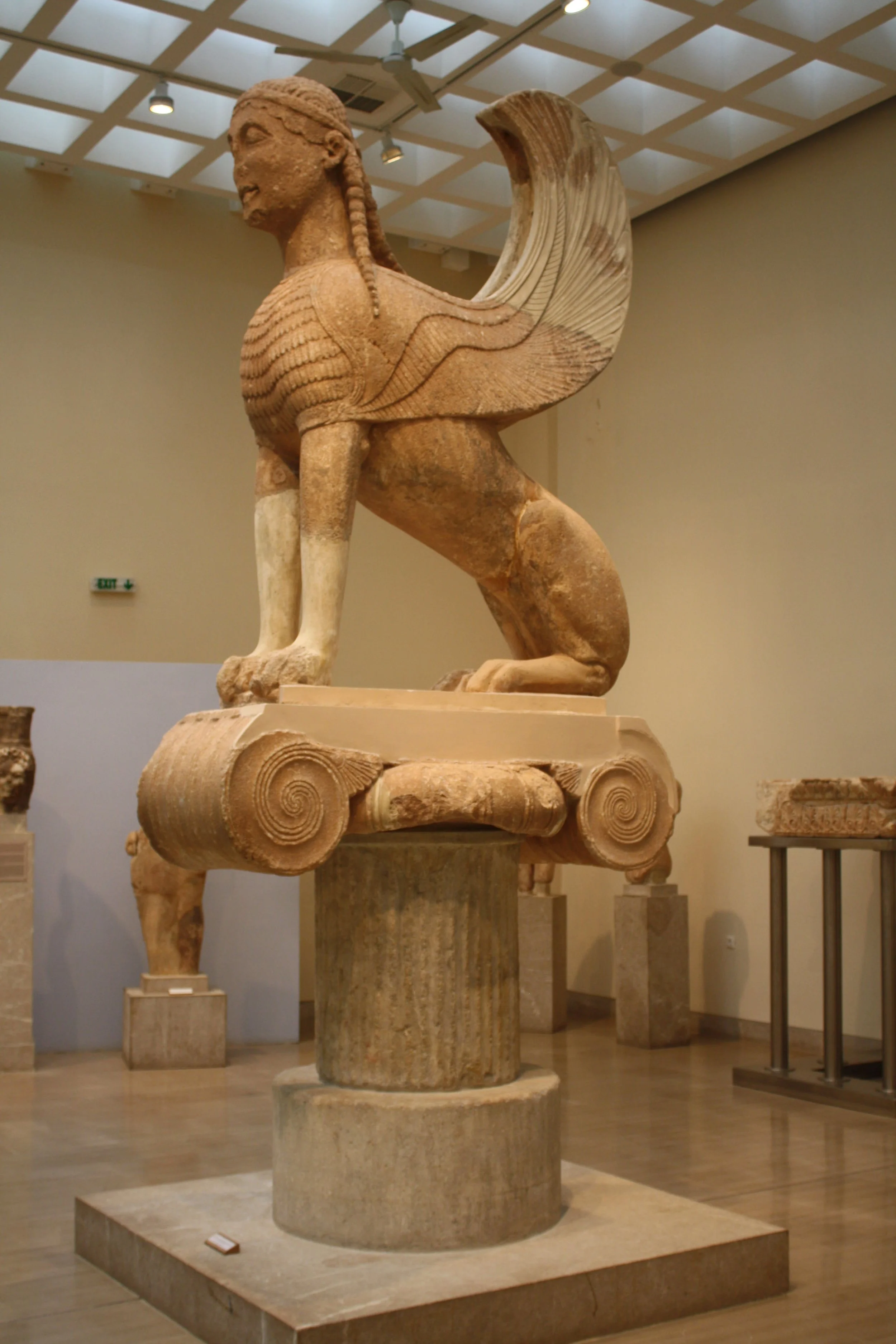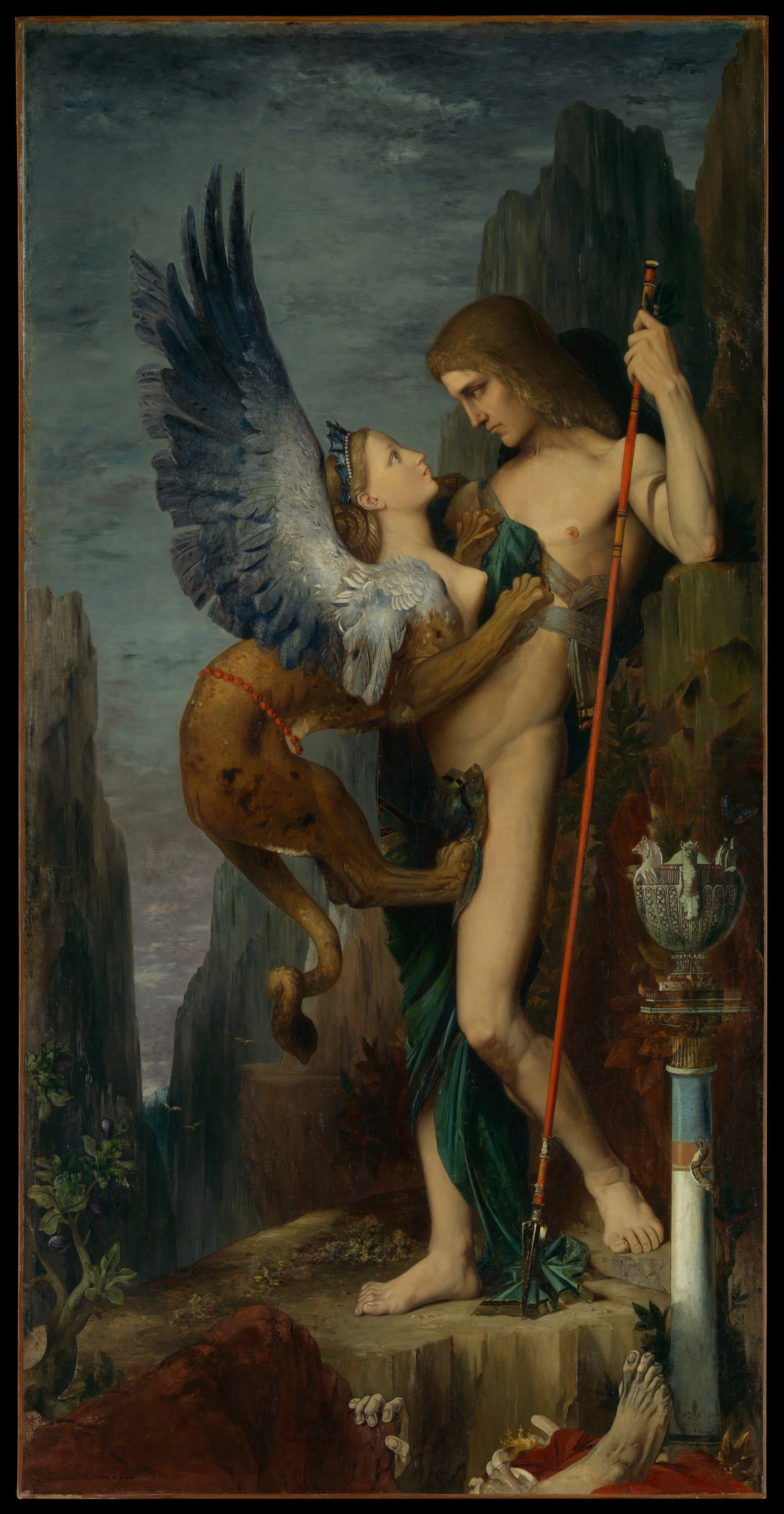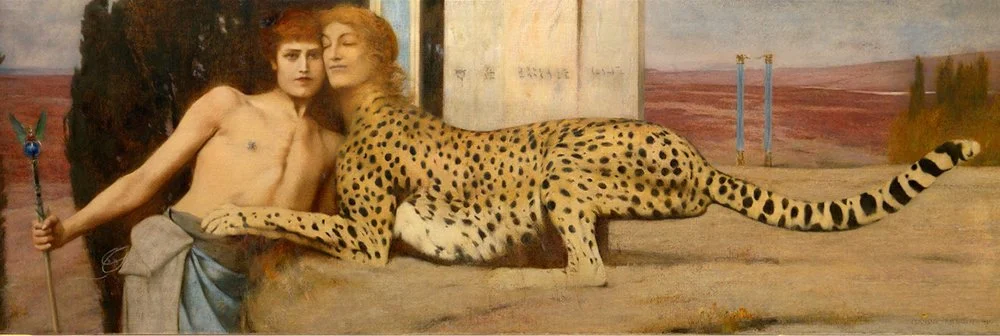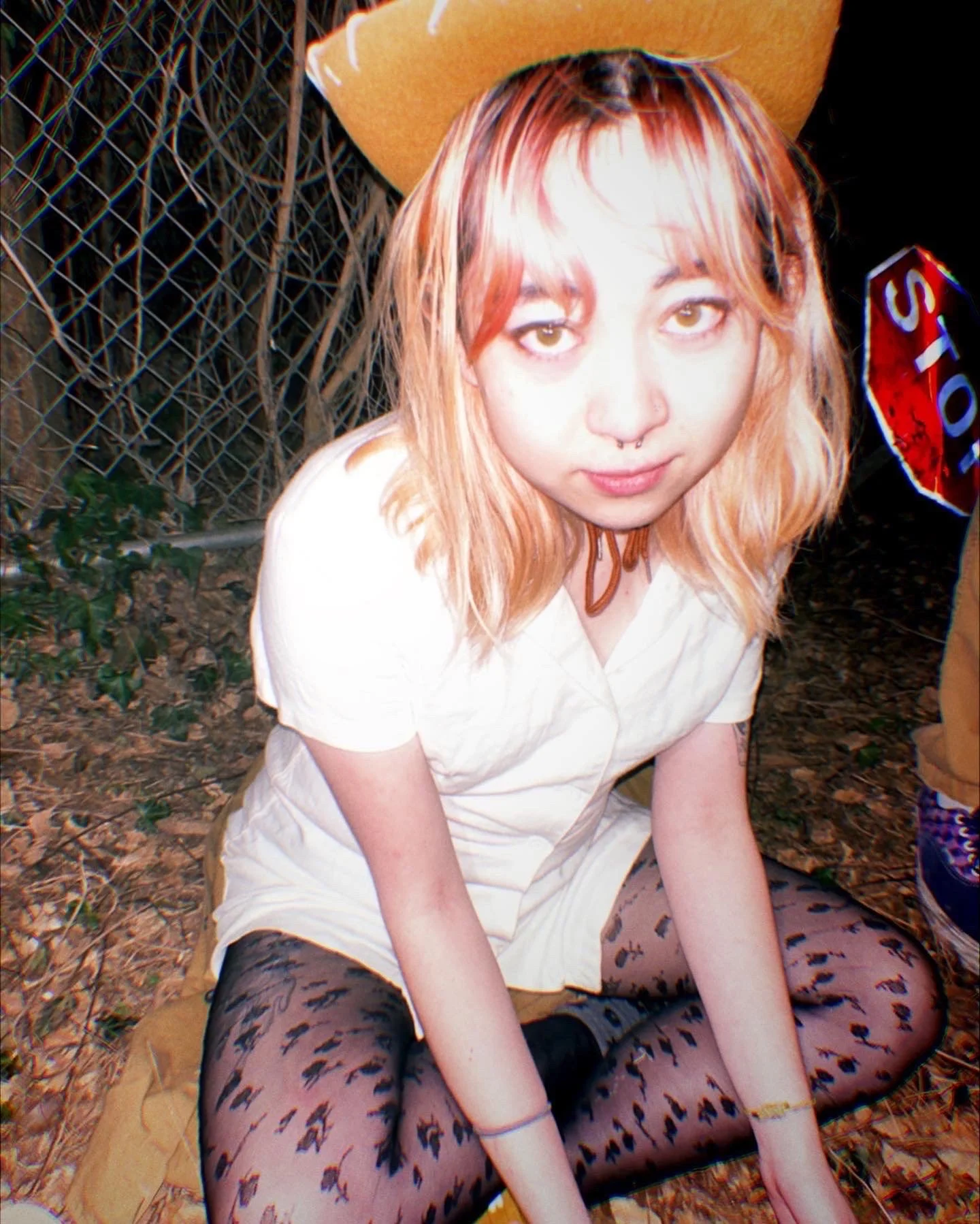Katja Gappert
The Sphinx: Riddles and a Metamorphose
What is that which has one voice and yet walks with four and two and three feet? That is the Sphinx’s riddle. Although it isn’t the first mention of the Sphinx, it remains resonant for many. Over time the image of the Sphinx has transformed from a guardian into a man eating beauty. The Sphinx first appeared in Ancient Egypt as a creature possessing the head of a human and the body of a lion. It was a spiritual guardian and oftentimes depicted as male with a pharaoh headdress. In Greece, the Sphinx was depicted as a winged lioness with a woman’s head. Sophocles memorialized this enigmatic entity in the tragedy, Oedipus the King. This inspired many artists to create their own renditions of her image. There the Sphinx changed from a protector into a mysterious femme fatale figure. The iconographic transformation was a result of idealizing and incorporating aspects of female figures of Greek art and the classical period. The riddle’s answer is Man; who crawled as a baby, walks as an adult, and then uses a cane in old age. This solution to her riddle describes the changing stages of man throughout time, which she poses to seeking travelers throughout history.
Sphinx of Hatshepsut, Granite, paint. 64in x 135in, Met MuseumThis Colossal Sphinx depicts Hatshepsut, one of the only two female pharaohs of Ancient Egypt. The statue is one of six granite sphinxes in Haptshepsut’s mortuary temple acting as a benevolent guardian. She is shown with the body of a lion and a human head. The sculptor highlights the powerful muscles of a lion and the ideal face of a pharaoh. Hatshepsut is also adorned with nemes and a false beard, accouterments exclusively worn by pharaohs. Her masculine attire and muscular physique is not intended to trick the viewer into thinking she is a man. The image of the sphinx and accessories are associated with male pharaohs in Ancient Egypt, however Hatshepsut is not using the image for gendered connotations. She is asserting her position as royalty and preserving the aura of divinity.
The Naxian Sphinx, Marble. 9.59ft, Archaeological Museum of DelphiThis painting illustrates how later artists rendered the Sphinx according to the aesthetic sensibilities of their own eras. Moreau transforms the Sphinx into an erotic figure based on the myth of Oedipus. Moreau describes this painting “Man finds himself in the presence of the eternal enigma.” The Sphinx takes focus in this piece clawing at Oedipus’s chest and genitals after Oedipus has just solved her riddle. This is her ultimate downfall, and Moreau wishes to portray Oedipus claiming triumph over the monster with his superior wit. She is depicted as highly feminine, and shines a soft benign expression as she locks eyes with Oedipus. This is macabrely contrasted with the bones and cadaver at the bottom of the piece.
The Naxian Sphinx is perched atop a 12 meter tower on the island of Naxos. This creature had the body and legs of a lion, the chest and wings of a bird of prey, and the head of a woman. Her long neat curls are held back by a band, and she stares ahead with an archaic fashioned smile. This statue was an offering from the people of Naxos to a sanctuary for the god, Apollo. The Sphinx in the Aegean was seen as a symbol of Earthly divinity and heavenly power. They were often seen at tombs and sanctuaries serving as a protector.
Oedipus and the Sphinx, Oil on canvas. 81.25 x 41.25 in, Met MuseumThe Caresses (The Sphinx), Oil on canvas. 51in x 19 in, Royal Museums of Fine Arts of BelgiumThe Caresses plays with the contrast of the sexless androgyne and the overly sensual Sphinx. Khnopff was greatly influenced by Gustave Moreau’s depiction of Oedipus and the Sphinx, and this piece is a direct effect of this inspiration.The Sphinx is portrayed as relaxed and fully exposed, and is painted as half human and half wildcat. She bears a sensual smile. The androgyne is shown in surrealist pieces as a hybrid of male and female, and they are embodying self control as they are a symbol of chastity. They stay calm and strong without giving into the Sphinx’s seduction. This piece is participating in the continuous theme of the lustful Sphinx in the imaginings of Surrealism.
Little Hermit Sphinx, Oil on canvas. 23 x 17 in, Tate ModernLeonor Fini, fed up with how surrealists depicted the Sphinx, wanted to portray the creature in a different way. She came to identify herself with this beast, and The Little Hermit is a direct expression of how the artist felt after her voluntary hysterectomy. In tarot, the archetype of the hermit represents contemplation, healing, and recovery. The egg shells and destruction are not caused by the Sphinx itself. Rather than causing destruction, the Sphinx is mourning the children that will never be born. As a woman, Fini wanted to reclaim the icon of the Sphinx, and turn it into an empowering figure.
Katja Gappert
(she/her)
Art History ‘23
Katja is in her 3rd year of an Art History BA. She grew up in Denver, CO and moved to Philly to pursue art history. Katja has recently gained an interest in ancient art and language, and hopes to continue her education in that field. She really loves how humans have always had the urge to create art for centuries.


